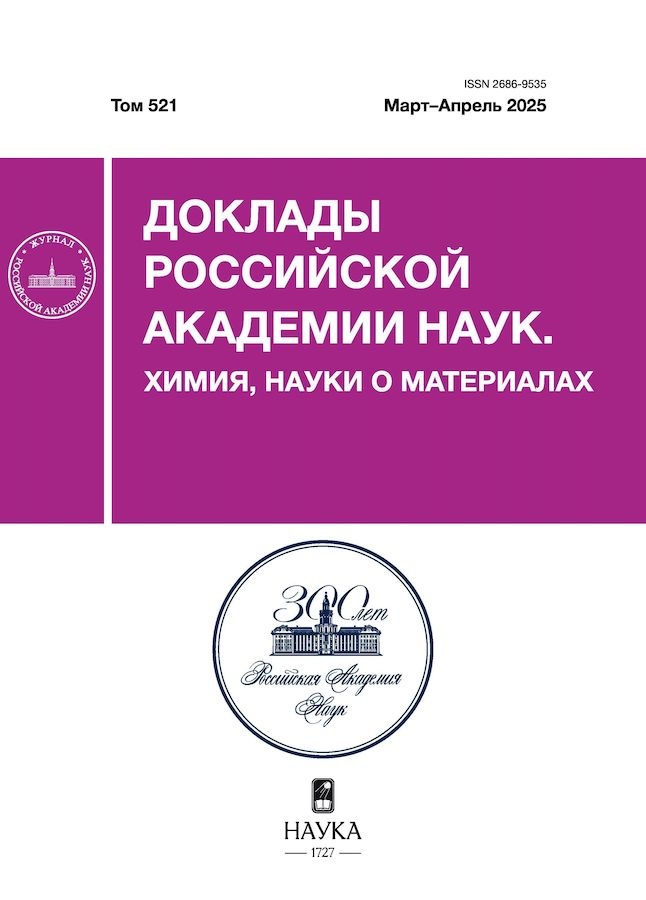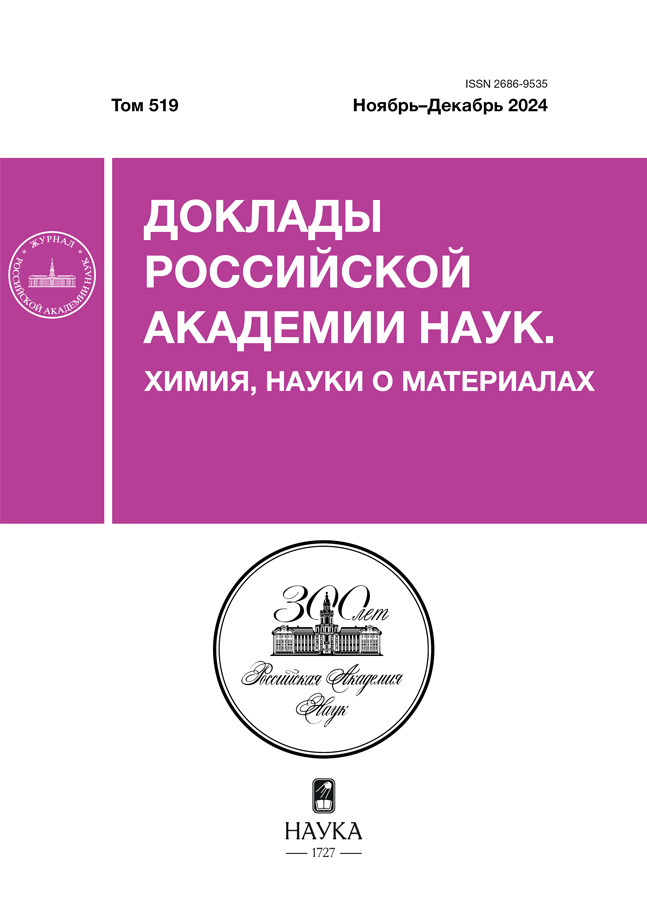Супергидрофобизация окрашенных поверхностей для повышения их защитных свойств и придания новых функциональных свойств материалам
- Авторы: Кузина Е.А.1, Емельяненко А.М.1, Бойнович Л.Б.1
-
Учреждения:
- Институт физической химии и электрохимии им. А.Н. Фрумкина Российской академии наук
- Выпуск: Том 519, № 1 (2024)
- Страницы: 17-24
- Раздел: ФИЗИЧЕСКАЯ ХИМИЯ
- URL: https://innoscience.ru/2686-9535/article/view/682478
- DOI: https://doi.org/10.31857/S2686953524060031
- EDN: https://elibrary.ru/BOVJLP
- ID: 682478
Цитировать
Полный текст
Аннотация
Предложен метод супергидрофобизации слоя эпоксидной эмали на основе применения импульсной лазерной обработки и хемосорбции на текстурированную поверхность эмали фторированного силана. Показано, что гибкое управление параметрами лазерного излучения позволяет текстурировать поверхность эмали без ее перегрева и последующего разрушения. Экспериментальные исследования показали, что в результате супергидрофобизующей обработки улучшаются защитные свойства эмали и появляются новые функциональные свойства, такие как водоотталкивающие свойства с экстремальными углами смачивания и скатывания, повышенная стойкость как к абразивным нагрузкам, так и к поверхностным напряжениям, возникающим в зоне трехфазного контакта при кристаллизации воды и плавлении льда.
Полный текст
Об авторах
Е. А. Кузина
Институт физической химии и электрохимии им. А.Н. Фрумкина Российской академии наук
Email: ame@phyche.ac.ru
Россия, 119071 Москва
А. М. Емельяненко
Институт физической химии и электрохимии им. А.Н. Фрумкина Российской академии наук
Автор, ответственный за переписку.
Email: ame@phyche.ac.ru
Россия, 119071 Москва
Л. Б. Бойнович
Институт физической химии и электрохимии им. А.Н. Фрумкина Российской академии наук
Email: ame@phyche.ac.ru
академик РАН
Россия, 119071 МоскваСписок литературы
- Бойнович Л.Б. // Вестник РАН. 2013. Т. 83. № 1. С. 10–22. https://doi.org/10.7868/S0869587313010039
- Ogihara H., Okagaki J., Saji T. // Langmuir. 2011. V. 27. № 15. P. 9069–9072. https://doi.org/10.1021/la200898z
- Manabe K., Saikawa M., Sato I., Loo C.S., Takashima K., Norikane Y. // ACS Appl. Polym. Mater. 2024. V. 6. № 22. P. 13701–13709. https://doi.org/10.1021/acsapm.4c02416
- Бузник В.М. // Авиационные материалы и технологии. 2013. № 1 (26). С. 29–34.
- Бойнович Л.Б., Бузник В.М., Гракович П.Н., Грязнов В.И., Пашинин А.С., Юрков Г.Ю. // Докл. АН. 2015. Т. 462. № 4. С. 431–434. https://doi.org/10.7868/S0869565215160124
- Кондрашов Э.К., Нефедов Н.И., Веренинова Н.П., Кущ П.П., Кичигина Г.А., Кирюхин Д.П., Бузник В.М. // Все материалы. Энциклопедический справочник. 2016. № 1. С. 2–10.
- Кузина Е.А., Емельяненко К.А., Домантовский А.Г., Емельяненко А. М., Бойнович Л.Б. // Коллоид. журн. 2022. Т. 84. № 4. С. 453–464. https://doi.org/10.31857/S0023291222040097
- Diker C.Ö., Duman O., Tunç S. // Appl. Clay Sci. 2023. V. 244. P. 107109. https://doi.org/10.1016/j.clay.2023.107109
- Diker C.Ö., Duman O., Tunç S. // Appl. Clay Sci. 2024. V. 262. P. 107626. https://doi.org/10.1016/j.clay.2024.107626
- Емельяненко А.М., Бойнович Л.Б. // Приборы и техника эксперимента. 2002. Т. 45. С. 52–57.
- Кузина Е.А., Омран Ф.Ш., Емельяненко A.М., Бойнович Л.Б. // Коллоид. журн. 2023. Т. 85. № 1. С. 63–70. https://doi.org/10.31857/S0023291222600614
- Залесский Б.В., Флоренский К.П. // Труды института геологических наук. АН СССР. 1952. Т. 146. № 42. С. 39–50.
- Wenzel R.N. // Ind. Eng. Chem. 1936. V. 287 № 8. P. 988–994. https://doi.org/10.1021/ie50320a024
- Prorokova N.P., Vavilova S.Y., Bouznik V.M. // J. Fluorine Chem. 2017. V. 204. P. 50–58. https://doi.org/10.1016/j.jfluchem.2017.10.009
- Севостьянов Н.В., Розен А.Е., Бузник В.М., Логинов О.Н., Усатый С.Г., Болсуновская Т.А. // Трение и износ. 2020. Т. 41. № 1. С. 55–62.
- Севостьянов Н.В., Бурковская Н.П., Бузник В.М. // Трение и износ. 2015. Т. 36. № 6. С. 671–674.
- Stern M., Geary A.L. // J. Electrochem. Soc. 1957. V. 104. P. 56–63. https://doi.org/10.1149/1.2428496
- Bäuerle D. Material transformations, laser cleaning. In: Laser processing and chemistry. Berlin, Heidelberg: Springer, 2011. P. 535–559. https://doi.org/10.1007/978-3-642-17613-5_23
Дополнительные файлы















